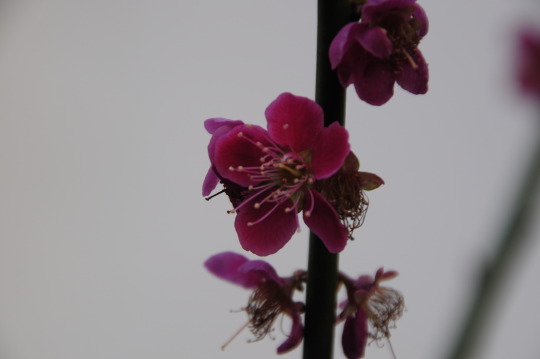#chemical industry
Here is a roundup on some of the most recent research and scientific efforts against the coronavirus.
Novartis:
Novartis has reached an agreement with the US Food and Drug Administration to proceed with a phase III clinical trial of hydroxychloroquine in hospitalized Covid-19 patients. The large trial will be conducted at more than a dozen sites in the US and tested on approximately 440 patients to evaluate the use for this treatment.
Additionally, Norvatis plans to make its hydroxychloroquine intellectual property available to support broad access to hydroxychloroquine. Read more here.

Causaly
Causaly, an innovative technology company that harnesses AI to interpret vast databases of biomedical knowledge, is collaborating with UCL academics to increase research on potential therapeutic agents and the identification of biomarkers.
Several researchers and research groups within UCL have been granted access to Causaly technology, allowing them the access to rapidly analyse and derive insights from biomedical literature.
Read more here.

Vaccine Taskforce
As part of the UK’s wider efforts to support the development of a vaccine, a new government-led Vaccine Taskforce will soon be launched to drive forward the manufacturing and research efforts to fight the virus.
The government will review regulations to facilitate fast and safe vaccine trials, as well as operational plans, to ensure a vaccine can be produced at a large scale when it becomes available. Industry and academic institutions will be given the resources and support needed.
Business Secretary Alok Sharma said, ‘UK scientists are working as fast as they can to find a vaccine that fights coronavirus, saving and protecting people’s lives. We stand firmly behind them in their efforts. The Vaccine Taskforce is key to coordinating efforts to rapidly accelerate the development and manufacture of a potential new vaccine.’ Read more here.

A new biosensor for the COVID-19 virus
Research teams at Empa and ETH Zurich have developed an alternative test method in the form of an optical biosensor. The sensor made up of gold nanostructure, known as gold nonoislands on a glass substrate, combines two different effects to detect covid-19: an optical and a thermal one.
According to the release, ‘Artificially produced DNA receptors that match specific RNA sequences of the SARS-CoV-2 [virus] are grafted onto the nanoislands,’ and researchers will then use the optical phenomena, - localised surface plasmon resonance - to monitor the presence of the virus.
The biosensor is not yet ready to be used to monitor and detect COVID-19, however tests showed the sensor can distinguish between very similar RNA sequences of SARS-CoV-2 virus and its relative, SARS-Cov. Read more here.
For more information and more updates on the coronavirus, please visit our hubhere.
One of the most beloved flowers in China (and elsewhere) this small tree was planted here in the SCIence garden to represent the Chinese UK group. It is in bloom from late winter and the bright pink flowers have a strong perfume. It is growing in the centre at the back of the main area of the garden.
There are 309 accepted species in the genus Prunus listed on the Plants of the World Online database (plantsoftheworldonline.org). The genus is distributed mainly across the Northern temperate zones but there are some tropical species.

The genus Prunus is generally defined based on a combination of characteristics which include: a solitary carpel (the structure enclosing the ovules – a combination of the ovary, style and stigma) with a terminal style, a fleshy drupe (fruit), five sepals and five petals and solid branch pith. The drupe contains a single, relatively large, hard coated seed (stone) – familiar to us in cherries, apricots, nectarines, peaches etc
This particular species, Prunus mume, originates from southern China in the area around the Yangtze River. The ‘Beni-chidori’ cultivar has been given an Award of Garden Merit by the Royal Horticultural Society.

Over 300 different cultivars of this species have been recorded in China, perhaps not surprisingly for a plant that has been domesticated for thousands of years due to its floral beauty. A recent study on the genetic architecture of floral traits across the cultivars of this species was published in Nature Communications.1
Prunus mume was introduced from China into Japan, Korea, Taiwan and Vietnam and it is now fully integrated into the cuisines of all these countries. In addition to its uses in many foodstuffs and drinks, extracts from the fruit are also widely used in traditional Chinese medicine and in the traditional medicines in Korea and Japan. Anti-bacterial, anti-oxidative, anti-inflammatory and anti-cancer properties have all been ascribed to the extract which has been used to treat tiredness, headaches, constipation and stomach disorders amongst other things. A recent review published in the Journal of Ethnopharmacology2 gathers together information from literature reports on the anti-cancer activity of Prunus mume fruit extract.
One standardised extract in particular (MK615) has shown antitumour activity against most common cancer types.
The anti-cancer activity has not been ascribed to a particular component. Compounds isolated from the extract include ursolic acid, amygdalin, prunasin, chlorogenic acid, mumefural and syringaresinol.

Like all the plants in the SCIence garden – there’s a lot more to this one than just its ornamental beauty.
References
1. Zhang, Q., Zhang, H., Sun, L. et al. The genetic architecture of floral traits in the woody plant Prunus mume. Nat Commun 9, 1702 (2018). https://doi.org/10.1038/s41467-018-04093-z
2. Bailly, C. Anti-cancer properties of Prunus mume extracts. J Ethnopharmacology 246,2020, 112215. https://doi.org/10.1016/j.jep.2019.112215
Written by Alison Foster: Botanical Horticulturist and Science Communicator
Rayon! Rayon, rayon, everywhere this #FashionFriday!
This photo spread comes courtesy of the June, 1947 issue of DuPont Magazine, a publication first printed by DuPont in 1913 to help publicize the company’s products and progress. This article highlighted, you guessed it, rayon, one of the many synthetic textiles the company manufactured (others included, but were not limited to nylon, Orlon acrylic, Dacron polyester, and Lycra Spandex).
Our digital collection of DuPont Magazine includes all issues published between 1913 and 2003. The issues include articles, product information, and advertisements on topics such as dynamite, quarrying, ammunition, popular plastic products, automobile accessories, contemporary fashion, and other useful items for the home. To view it online now, click here to visit its page in our Digital Archive.
Post link
William Henry Radebaugh (1909-1996), was a public relations executive at the DuPont Company for over twenty years. He wrote, produced and directed many films about the company during his tenure there and for several years after his retirement.
He began his career in public relations and in 1942, founded and was executive director of, the South Jersey Manufacturer’s Association in Camden, New Jersey. Radebaugh then took a position at the DuPont Company as a public relations consultant in 1952. He later became the Director of Public Relations for the Textile Fibers Department.
After retiring from his career in public relations with the DuPont Company in 1974, he went on to produce more films for DuPont with two former colleagues who had started the production company, Arden Films. Radebaugh was also an accomplished musician, having played with Jimmie and Tommy Dorsey, Louis Armstrong, and Jack and Charlie Teagarden. He was also an artist, working in needlepoint, watercolors, and printmaking.
Hagley Library’s collection of William Henry Radebaugh films and scripts (Accession 1975.412) includes correspondence, scripts, storyboards, proposals, and films like this one, written and directed by William Henry Radebaugh during his employment at the DuPont Company or for the company once he retired. This ca. 1970 reel shows how DuPont materials that were used in the Apollo 11 spacesuit were also purposed for commercial household use in “women’s chores”.
To view a selection of films from this collection online now, click here to view its page in our Digital Archive.
This #WorkerWednesday, we’re making a visit to the Camphor Plant of E.I. du Pont de Nemours & Company’s Chambers Works facility.
The site, located on the Delaware River in Deepwater Point, New Jersey, was established by the DuPont Company in 1892 for the purpose of manufacturing gunpowder. Between then and when it closed in 2018, the site was used to develop, manufacture, and store a wide variety of chemical products, including Kevlar, nylon, Freon, leaded gasoline, and uranium processing for the Manhattan Project.
Camphor, an aromatic compound produced from the wood of camphor producing plants, or synthetically derived from turpentine, is a versatile product used in mothballs, embalming fluids, perfumes, medicinal products and, in the early years of the plastics industry, as a plasticizer used in the manufacturing of celluloid and plastic lacquers.
This ca. 1945 photograph is part of Hagley Library’s collection of DuPont Company Product Information photographs (Accession 1972.341). The DuPont Company created the Product Information section within the Public Relations department in 1952. Its function was to produce news releases with photographs about DuPont and its products for indirect publicity and advertising purposes.
This collection contains photographs of DuPont Company corporate events and proceedings, product trade shows and fairs, development and manufacturing processes, and the employees and facilities where the products were created. Most of the photographs were taken from the 1930s through the 1950s. This collection has not been digitized in its entirety, but you can view a selection of images online now. Just click here to visit its page in our Digital Archive.
Post link


